2023 Best Natural Dish Soap Guide
Written by:
Maia James
03/07/2023
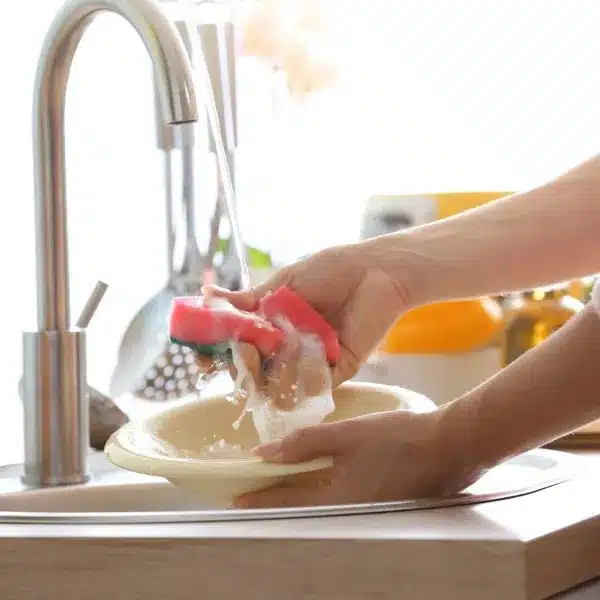
Updated: 01/23/2024
Looking for a different guide? Browse them all HERE.
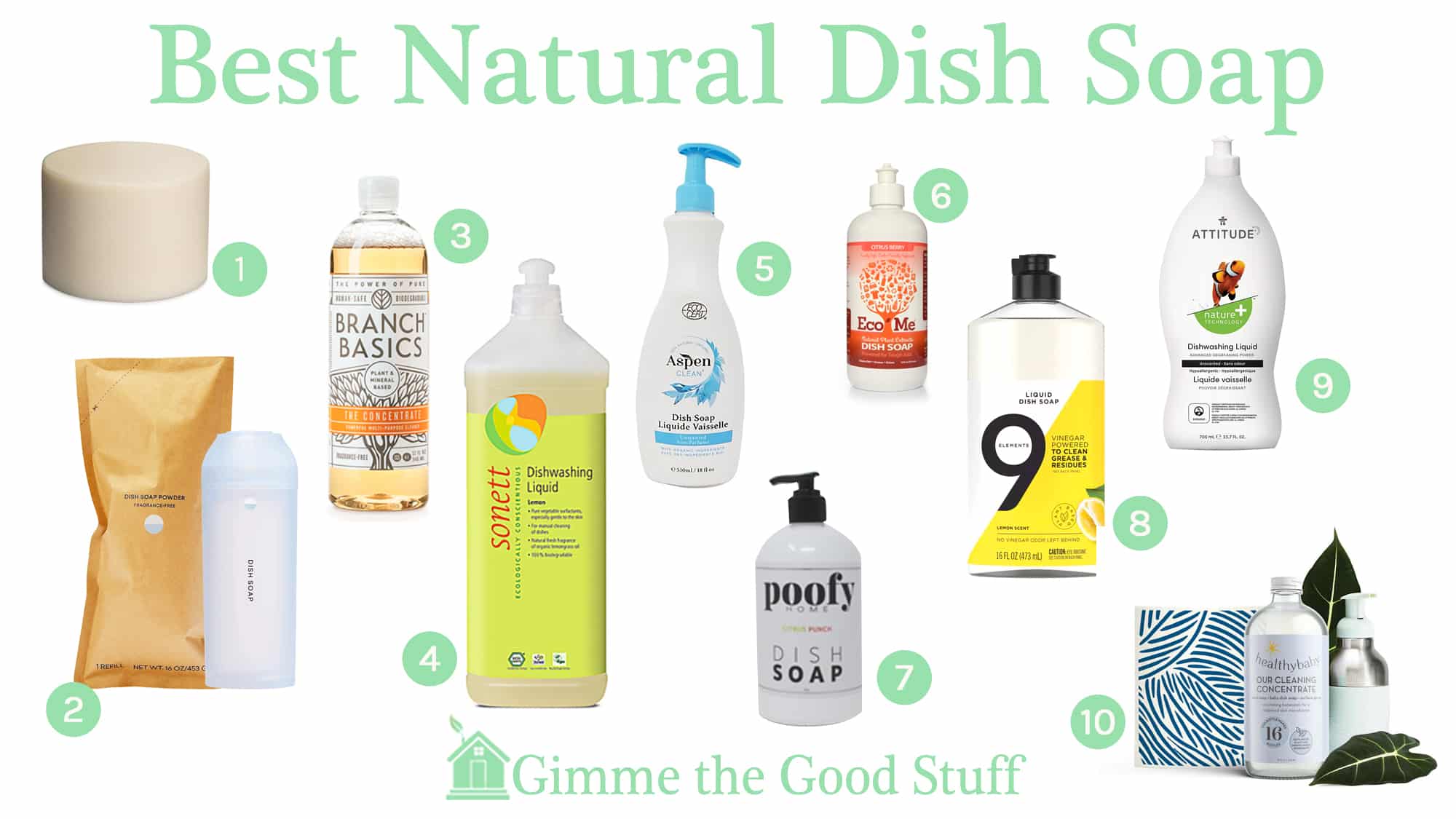
(These are not listed in order of preference–all are Good Stuff!)
What’s the best natural dish soap? Does anything really work, or does it always just feel like you’re smearing grease around a p This guide will answer these questions, and we hope it will make choosing a natural dish soap less confusing.
Admittedly, even the best natural dish soap brands have a hard time competing with the conventional brands. The trouble with being that tough on grease is that this usually also means the product is tough on the health of whoever uses the stuff–and on the aquatic life in the bodies of water where the soap ends up!
The other bad news is that many dish soaps marketed as “natural” nevertheless contain chemicals of concern. And while you do wash most of the product off of your dishes, some residue remains, which of course can be ingested. If you have little kids who like to “help” wash dishes, you’ll want to make sure you choose a dish soap that is truly non-toxic.
That said, I am more lenient on ingredients in dishwashing soap than, say, skin cream. Anything that goes directly on the skin and is absorbed is of course more concerning than products that you wash out.
The Most Effective Natural Dish Soap
If you want jump straight to the most effective natural dish soap, try Sonett’s dishwashing liquid. My husband is pickier than I am, and this is his favorite.
Natural Dish Soap Brands That Are:
- Most Affordable (over time): healthybaby
- Most Eco-Friendly: Meliora
- Available in Target: 9 Elements
- EWG-Verified: Aspen Clean, healthybaby, Attitude
Common Dish Soap Ingredients
Below are the most common ingredients in dishwashing liquid, natural and otherwise!
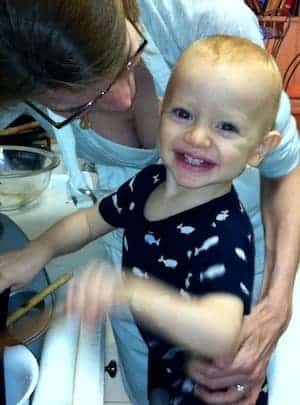
- Surfactants. Sodium laureth sulfate (SLES) and sodium lauryl sulfate (SLS) are common coconut-derived foaming agents. Both SLS and SLES produce bubbles in your dish soap, and are found in lots of “natural” brands. SLS is okay in my opinion, but SLES is not. (Here is where I explain the differences between sodium lauryl sulfate and sodium laureth sulfate.) There are other newer coconut-derived surfactants, such as potassium cocoate, that have good safety profiles. A surfactant that should definitely be avoided is cocamidopropyl betaine, which is rated a 5 out of 10 on EWG’s hazard scale because of contamination concerns.
- Dyes. Even food-grade coloring is implicated in behavioral issues in kids, and colorants can be contaminated with heavy metals. The best natural dish soap brands are all colorless.
- Fragrance. Anything scented probably contains hormone-disrupting phthalates, unless the manufacturers specify that they only use essential oils. Even phthalate-free synthetic fragrances usually are petroleum-derived and contain undisclosed chemicals. To me, there is nothing worse than drinking from a cup that tastes perfumey from dish soap, so this doesn’t feel like a sacrifice at all.
- Antibacterial ingredients. Thankfully, toxic triclosan has been mostly taken out of dish soaps. That said, any antibacterial ingredients should be avoided–soap and water is all you need to eliminate the bacteria on your dishes!
- Preservatives. Water-based products require preservativation to prevent bacterial growth, so you can expect that dish soap will contain preservatives. There are three preservatives in dish soap that will eliminate a product from making it into our Good Stuff category: benzisothiazolinone, methylisothiazolinone, and methylchloroisothiazolinone–all of which are skin irritants and extremely toxic to aquatic life.
Dish-Washing Accessories I Can’t Live Without
Read on for our picks for the best natural dish soaps—and the brands I’d rather see you avoid.
Good Stuff
9 Elements Liquid Dish Soap
This formula is different from the others because 9 Elements utilizes vinegar in their dish soap. None of their cleaning products contains more than nine ingredients, and scent comes from 100% essential oils.
Cost per ounce: $0.25
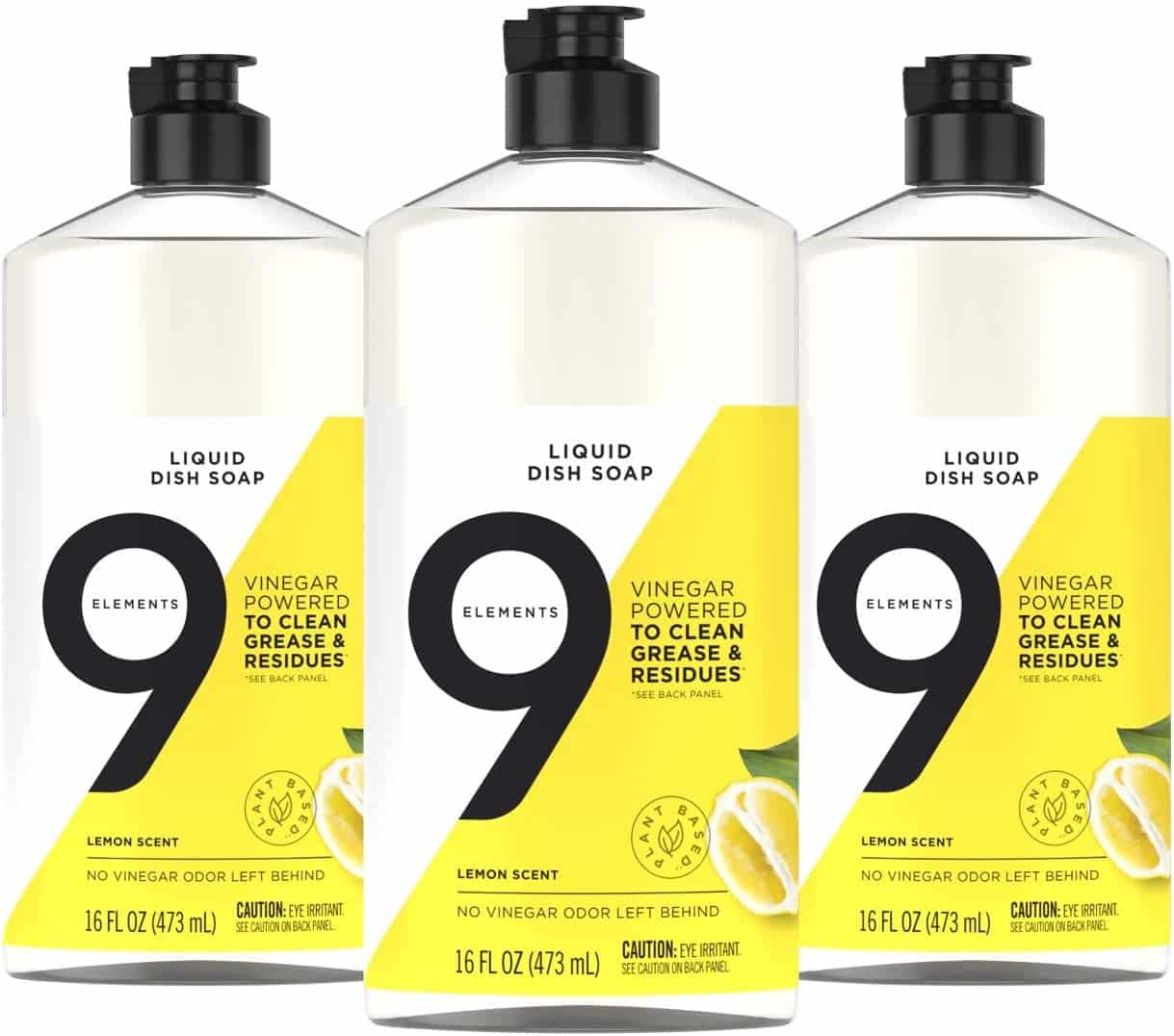
Aspen Clean Dish Soap
This EWG-verified dish soap comes in unscented, lavender/lemongrass, or eucalyptus/rosemary.
Cost per ounce: $0.66

Attitude Dishwashing Liquid
This affordable brand is surprisingly totally toxin-free and verified by EWG.
Cost per ounce: $0.38
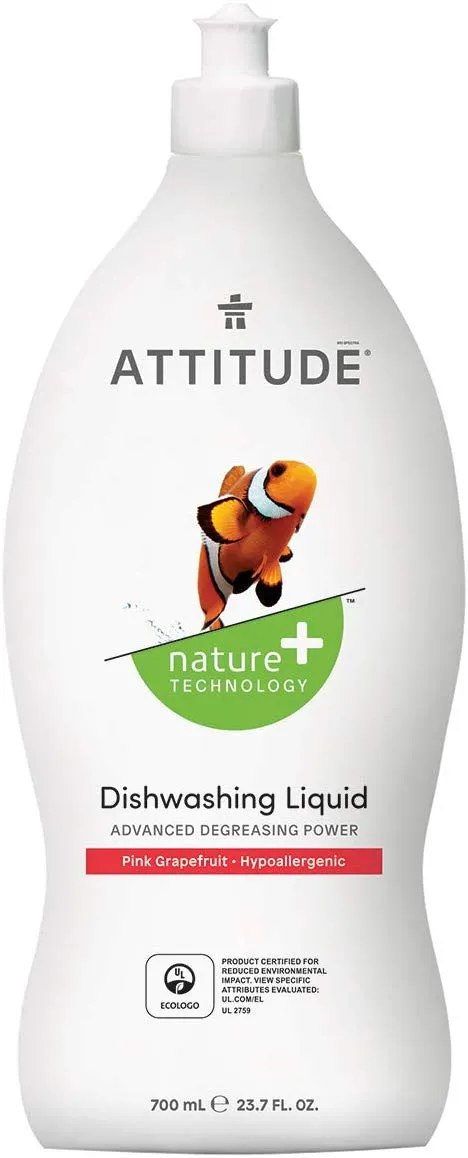
Blueland Dish Soap Powder
This Earth-friendly formula comes to you as a powder, which you simply pour onto a wet sponge to create a thick foam. Your first order comes with a silicone shaker that never needs to be replaced.
Cost per ounce: $0.75, plus one-time cost of Forever Shaker

Branch Basics The Concentrate
I’m a big fan of Branch for their environmentally-friendly, refillable cleaning products. The Concentrate works surprisingly well for dishes! You just dilute with lots of water and put into a dish soap bottle. You’ll have to invest in the first bottle ($55), but I feel like it would last for a decade of dirty dishes.
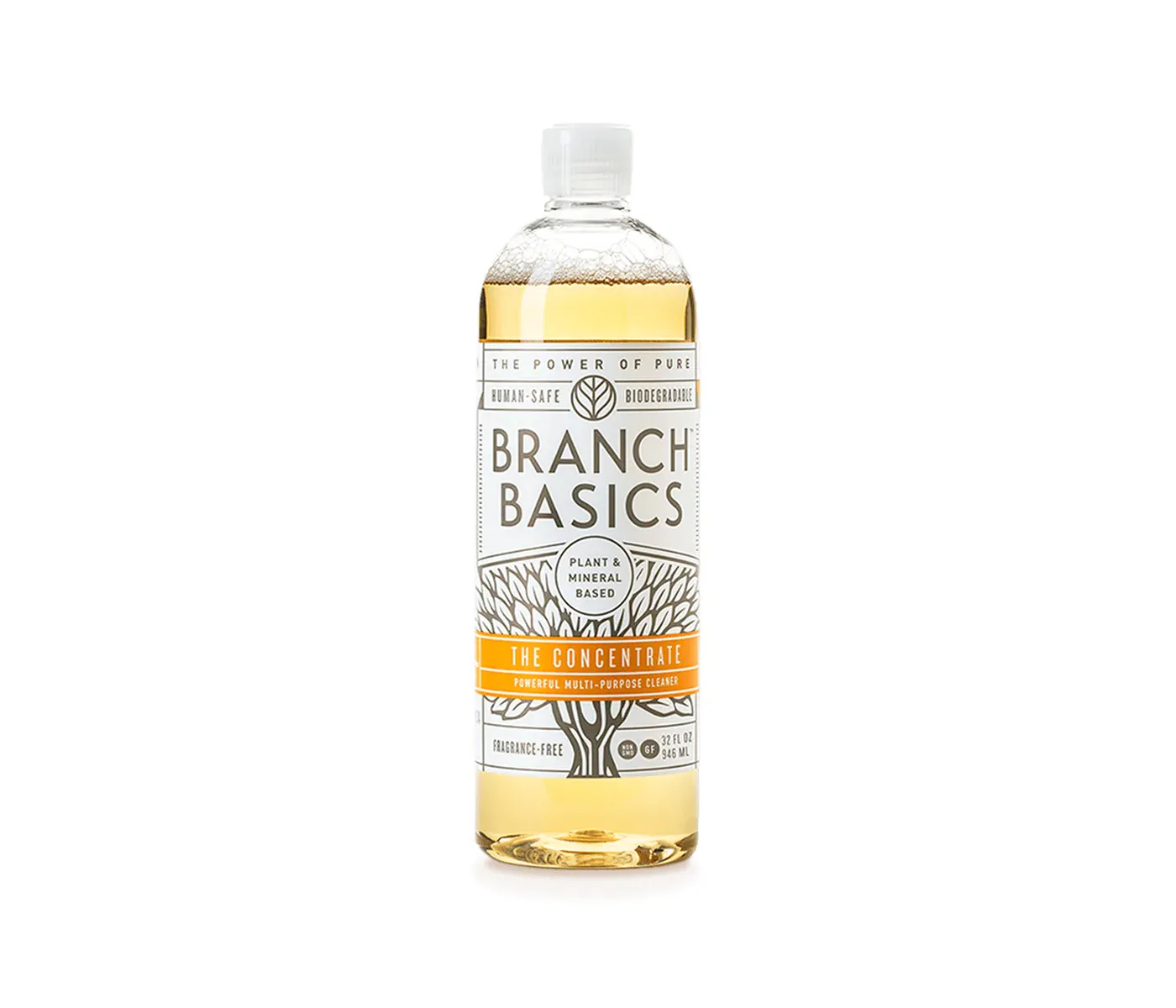
Common Good Dish Soap
Common Good dish soap was previously on our Sneaky Stuff list, but they’ve changed their formula! This is now a safe dish soap option, with nontoxic surfactants and natural essential oils for fragrance.
Cost per ounce: $1.30

Earthley Dish Soap Bar
Another safe bar soap option, Earthley’s dish soap uses only essential oils for a fresh lemon-thyme scent. Because this is a soap, not a detergent, it may not work well in areas with hard water.
Cost per ounce: $2.50
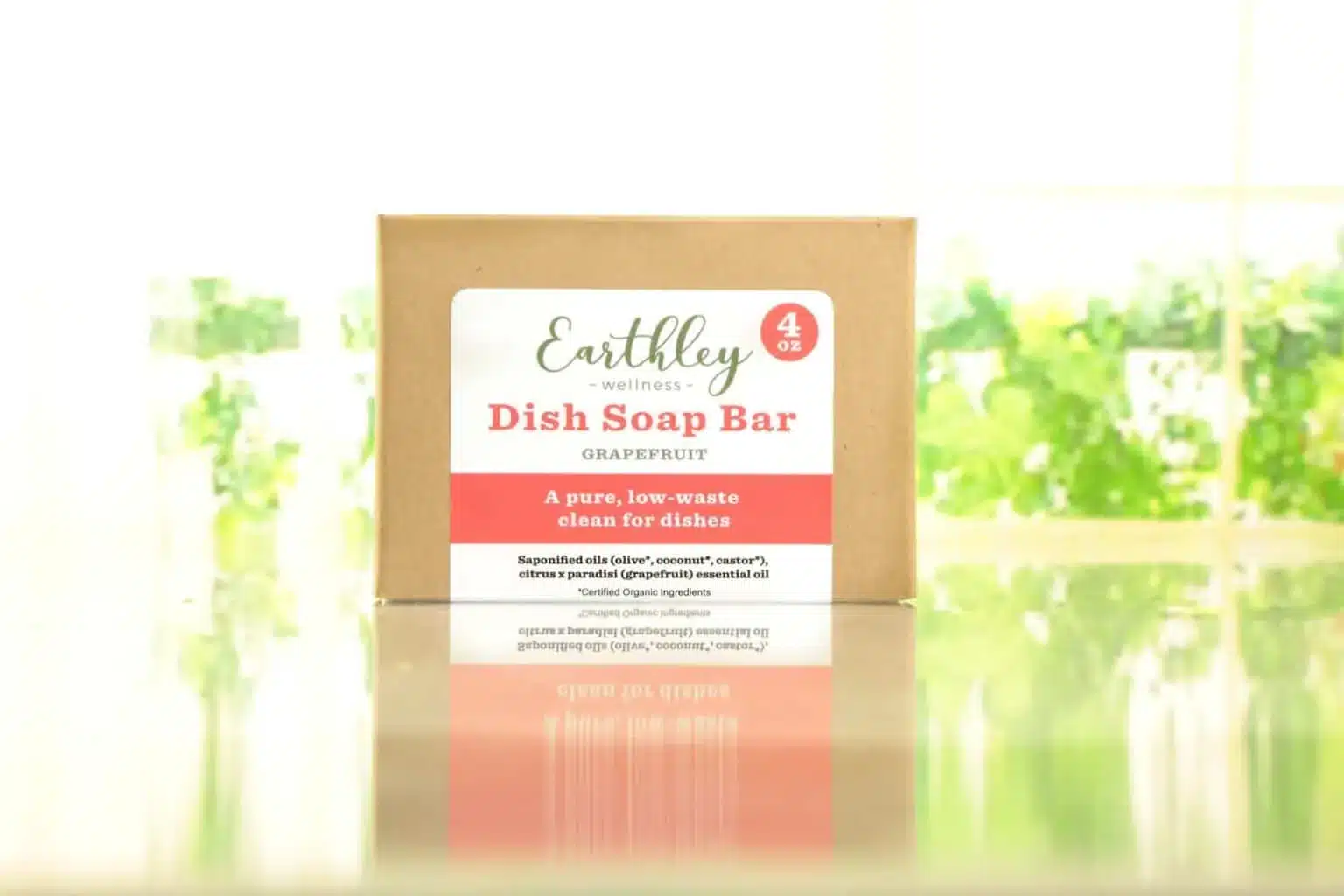
Eco-Me Plant Extracts Dish Soap
I love Eco-Me dish soap–it actually works, doesn’t contain scary ingredients, and smells good. It’s also one of the more affordable dish soaps.
Cost per ounce: $0.50
Healthybaby Baby Dish Soap
We love healthybaby’s dish soap system for babies. It is both EWG-verified and MADESAFE-certified. One bottle of concentrate makes 16 baby dish soaps.
Cost per ounce: $0.11, plus $45 one time cost for bottle, concentrate, and cloths
Use code GIMME15 for 15% off, including subscriptions.
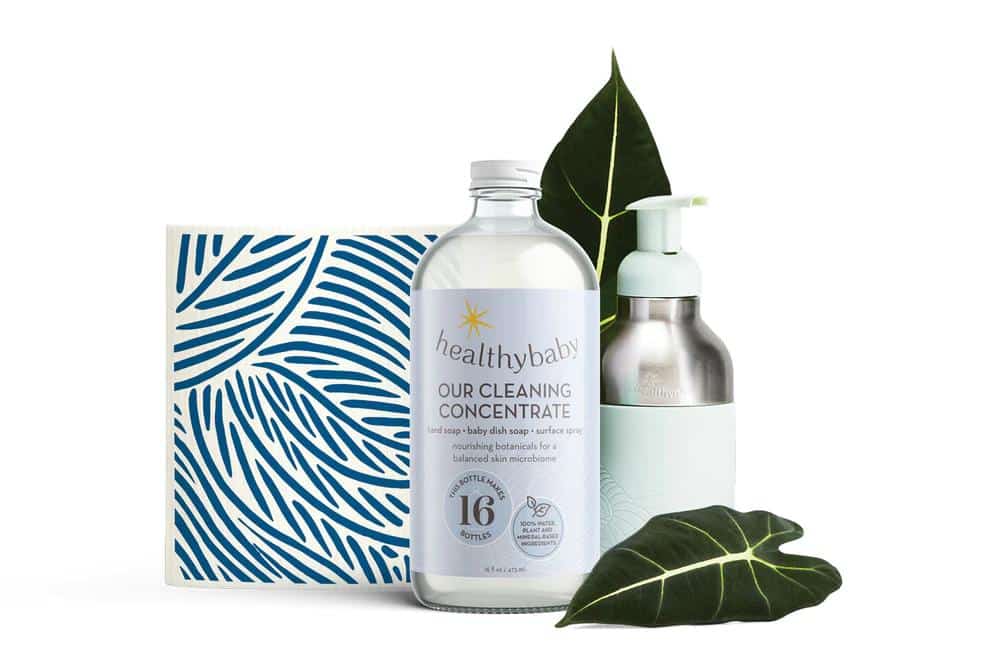
Meliora Natural Solid Dish Soap Puck
A plastic-free, surprisingly effective way to wash your dirty dishes, pots, and pans. I’ve found this works best with this long handled bamboo brush. You can even buy this puck without the paper packaging to make it an entirely waste-free product. Because this is a soap, not a detergent, it may not work well in areas with hard water.
Cost per ounce: $1.42
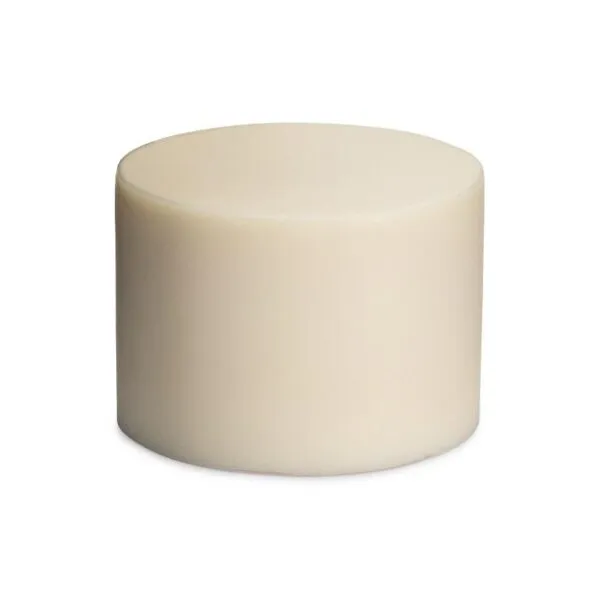
Poofy Organics Dish Soap
This dish soap uses a safe foaming agent (decyl polyglucose) and only essential oils for a pleasant scent.
Cost per ounce: $1.12
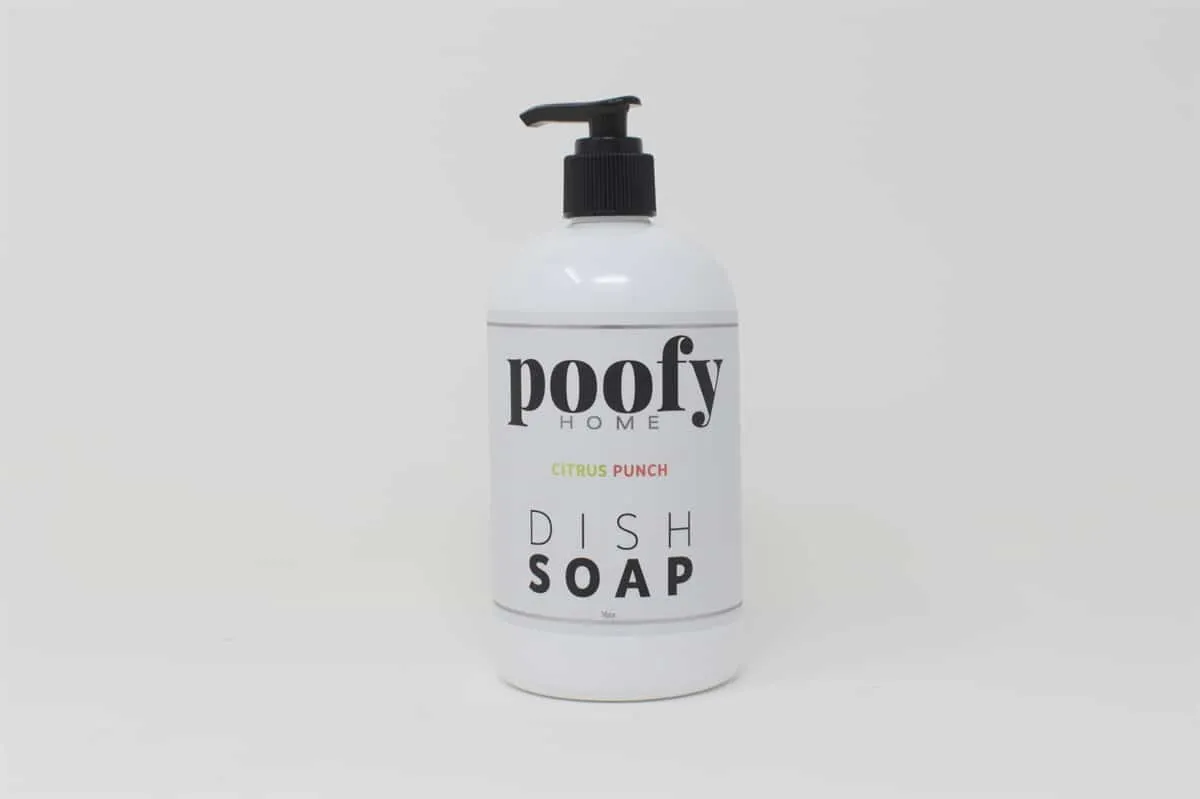
Sonett Dish Washing Liquid
This soap by the German company Sonett is my longtime favorite. It contains none of the usual toxic suspects found in conventional (and many natural) brands of dish soap, and works really well.
Cost per ounce: $0.50
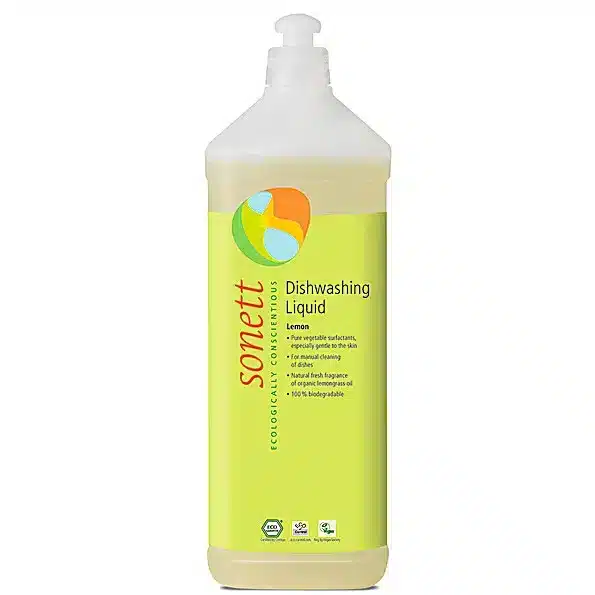
Tandi’s Naturals Solid Natural Dish Soap
Because this is a bar soap (no plastic!), I was reluctant to try it at first. I was pleasantly surprised when it worked! The trick is to rinse the sponge well and often and then reload with soap. The ingredients list is incredibly safe–it’s 100% natural with nothing questionable (see all ingredients here).
Tandi’s bar soap is also a great choice for those of you dealing with eczema who are looking to rid your homes of all detergents, because this is soap, rather than detergent.
This bar will last much longer than liquid dish soaps. I concede that it’s not for everyone, but it is hands-down the most planet-friendly dish soap I’ve found. Because this is a soap, not a detergent, it may not work well in areas with hard water.
Cost per ounce: $1.71
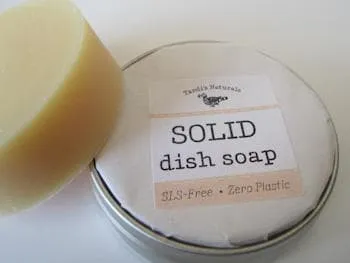
If you’re enjoying this guide, sign up for our Newsletter to be alerted when we publish or update our Safe Product Guides.
Okay Stuff
The following brands don’t make our Good Stuff list because of one or more ingredients that may be hazardous, but which are present only in small amounts. If you can’t get any of the Good Stuff options, these are acceptable.
Babyganics Foaming Dish & Bottle Soap
Babyganics has ditched the SLES in their dish/bottle soap, which is great. They continue to change their formula every time I check for updates, so make sure you verify the ingredients yourself. Sodium lauroamphoacetate is the newest surfactant, which seems safe enough, although more studies are needed. Babyganics has added methylisothiazolinone as a preservative, but in a small enough quantity that I’m still calling this Okay.
Cost per ounce: $1.26

Better Life Dish Soap
Better Life added methylisothiazolinone to their formula, which is why we no longer carry this dish soap in our store. I am still okay with using it in my own home, since this preservative is the only problematic ingredient. (And, it’s likely all I will be using for the next decade since Better Life failed to tell us they’d changed the formula and we were left sitting with hundreds of bottles!)
Cost per ounce: $0.38
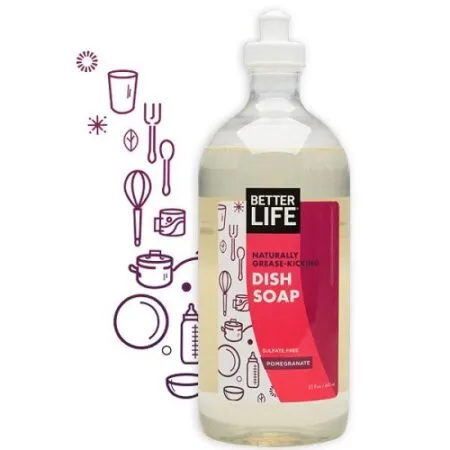
Dropps Dishwashing Spray
I really like that this sprays on and is refillable and therefore planet friendly. Most ingredients in this spray are totally safe. We are calling it Okay Stuff only because of the 1,3-dioxolane-4-methanol, 2,2-dimethyl-, and even this is not an overly concerning.
Cost per ounce: $2.00
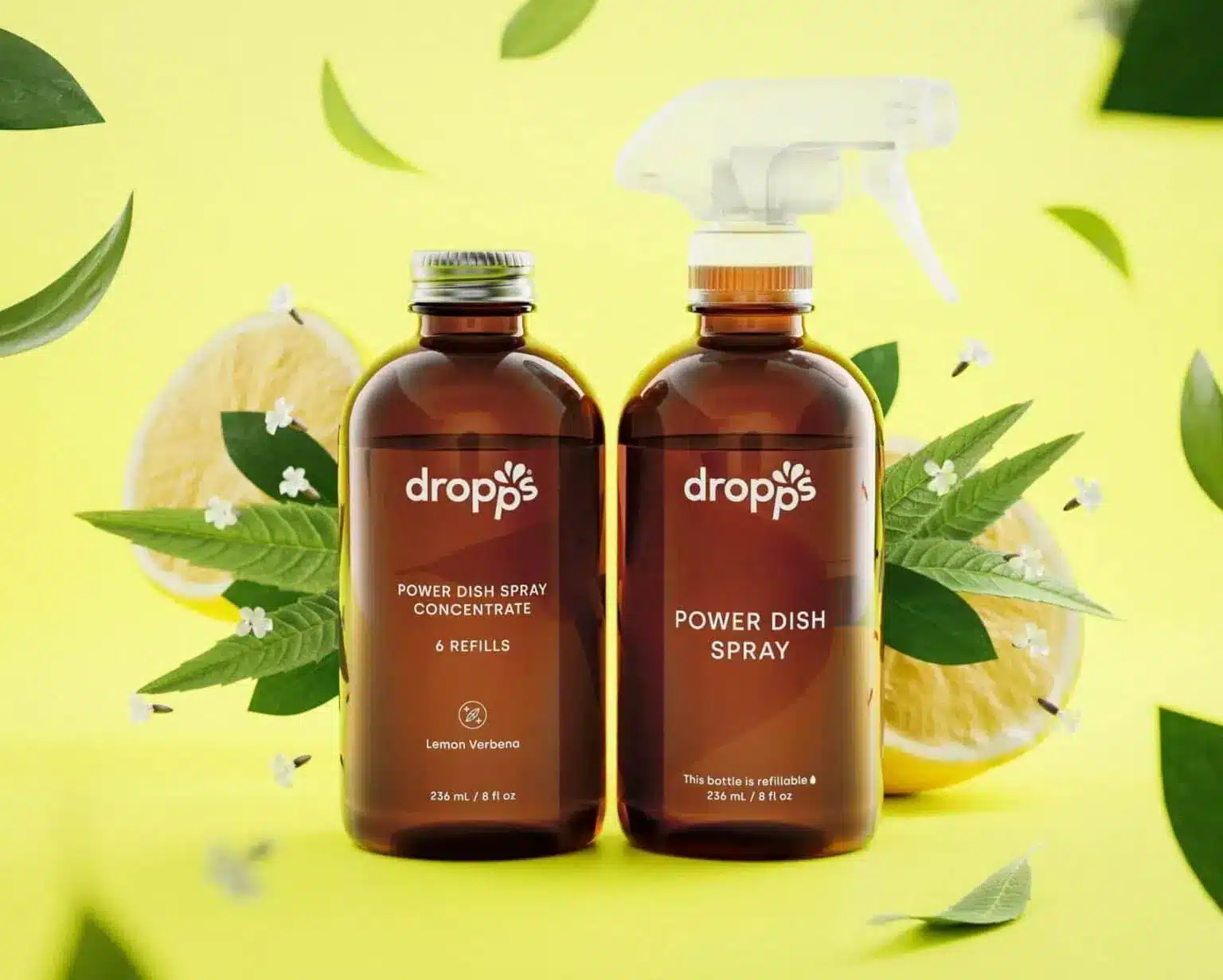
Ecover Dish Soap
Ecover’s liquid dish soap used to be on my Sneaky Stuff list, but they’ve changed their formula and it no longer contains SLES or many of the other concerning ingredients in the older version. Note that EWG hasn’t updated the list of ingredients, so their scores are inaccurate. Ecover dish soap is Okay Stuff instead of Good Stuff only because they use methylisothiazolinone and methylchloroisothiazolinone as preservatives.
Cost per ounce: $0.48
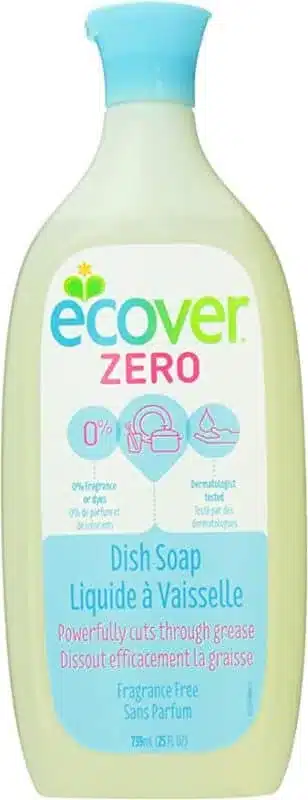
Grove Co. Dish Soap
A lot of what is sold on via Grove Collaborative is decidedly Sneaky, but their dish soap is not bad. It isn’t quite Good Stuff because of benzisothiazolinone and methylisothiazolinone
Cost per ounce: $0.31
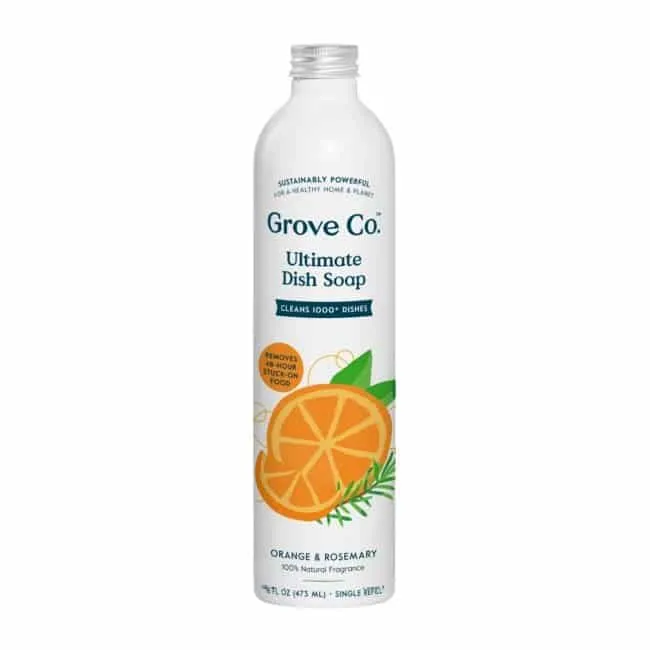
Puracy Natural Dish Soap
I have some concerns with some of the ingredients in Puracy’s soap, including benzisothiazolinone, tetrasodium glutamate diacetate, and sodium lauromphoacetate (all of these and other ingredients get C’s from EWG). Still, nothing is overly concerning, so Puracy dish soap is Okay Stuff.
Cost per ounce: $0.42
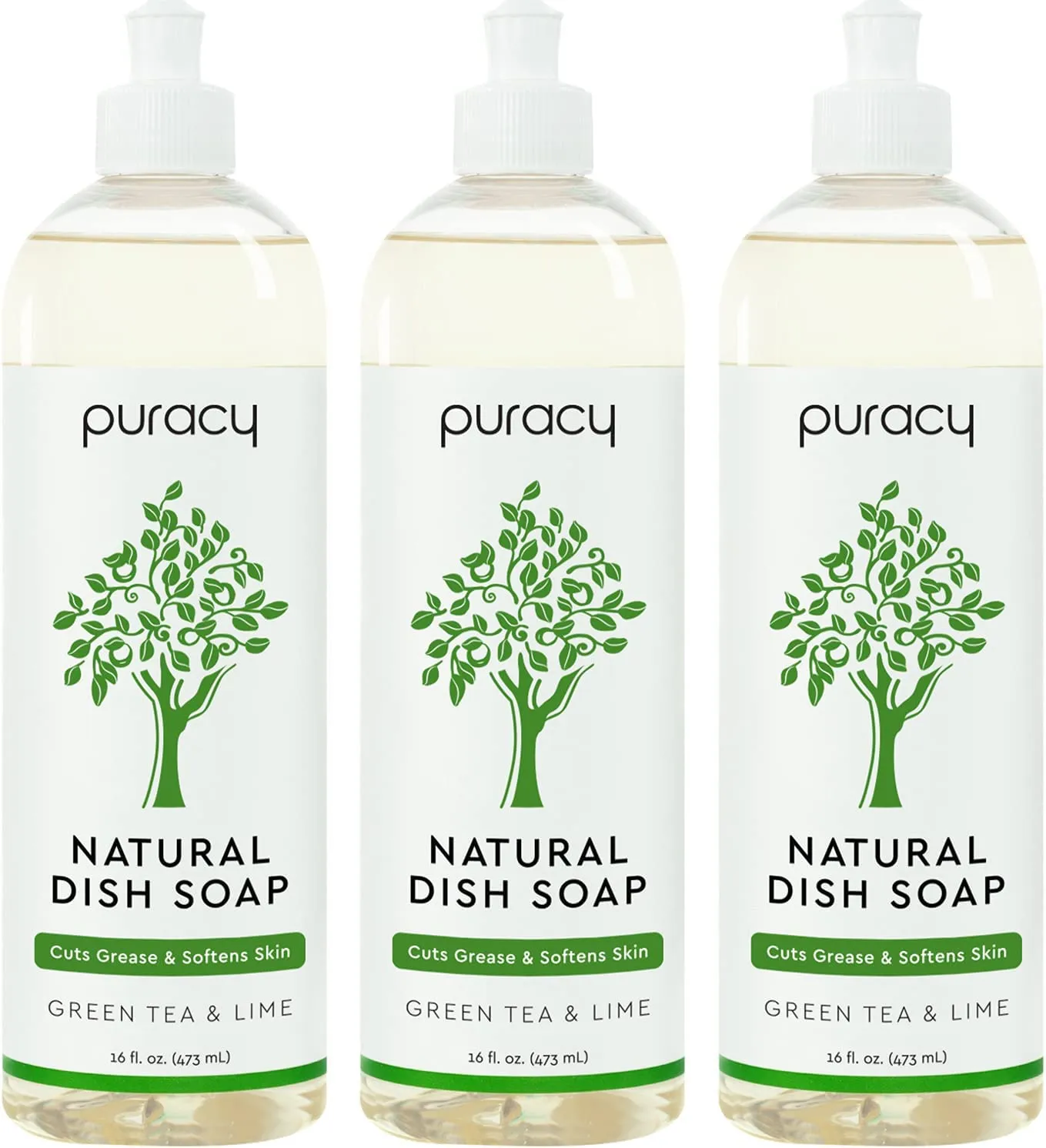
Seventh Generation Dish Liquid
Seventh Generation is totally transparent about their ingredients, so they get points for that. Another plus is that they test the SLS in their dish soap to ensure that it does not contain detectable levels of 1,4-dioxane. Unfortunately, their dish soap also contains methylisothiazonline, which is why we’ve put it in Okay Stuff.
Cost per ounce: $0.52
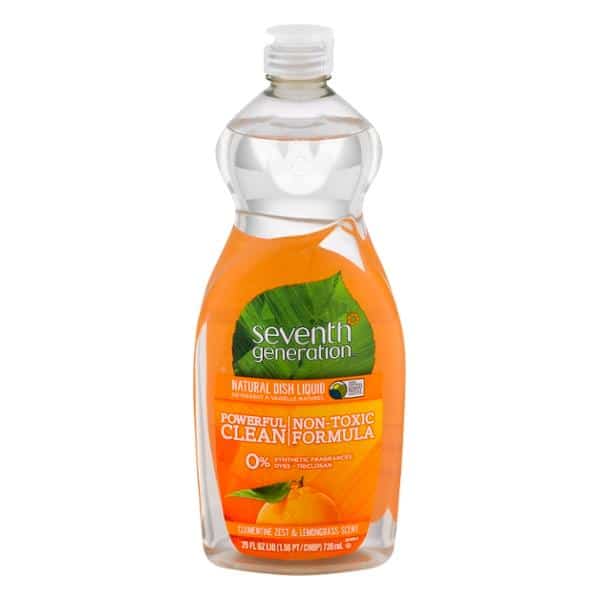
Bad Stuff
Dawn sucks, and while they don’t disclose all of their ingredients, you can find their MSDS on the P&G website. Depending on which formula you pick, you’ll find SLES, fragrance (probably with phthalates), artificial colorings, phenoxyethanol, and/or methylisothiazolinone.
Most Palmolive formulas contains sodium laureth sulfate, and they all contain synthetic fragrance and dyes. Palmolive does score a point for not using triclosan for their antibacterial soap (instead they use lactic acid). Palmolive’s “Eco” formula, and also the one they call “Pure + Clear” are the very definition of Sneaky Stuff! The Palmolive dish soap MSDS is available on the Colgate-Palmolive website.
Target’s Up & Up brand contains sodium laureth sulfate, fragrance, synthetic colors, methylchloroisothiazolinone, and methylisothiazolinone.
I could go on, but you get the point: stay away from Ajax, Ivory, Joy, and probably anything else that leaves your glasses suspiciously sparkly. And don’t be fooled by the “Free & Clear” version of these brands–they still contain SLES, methylisothiazolinone, and/or synthetic fragrance.
Sneaky Stuff
When it comes to dish soaps, there is a TON of Sneaky Stuff. What follows are the brands that you ask about most often.
365 dish soaps have moved from Okay Stuff to Sneaky Stuff, thanks to the addition of sodium laureth sulfate, cocamidopropyl betaine, and benzisothiazolinone.
Aunt Fannie’s dishwashing liquid contains cocamidopropyl betaine, although the rest of their line of cleaning products is Good Stuff!
When I wrote the first version of the dish soap safety review (back in 2010!), Biokleen was tight-lipped about the specific ingredients they use. (“Unfortunately, our surfactants are a proprietary blend and therefore we do not disclose that information to the public.”) Biokleen did assure me, however, that their detergent is free of both SLS and SLES and that they don’t use synthetic fragrances or dyes. They sent me their material safety data sheet (MSDS) and their surfactant blend is not considered hazardous or possibly carcinogenic. Given all of this information, I felt that Biokleen should be considered Good Stuff. Unfortunately, Biokleen recently changed their formula and, to their credit, chose to disclose all ingredients. These include cocamidopropyl betaine, lauramine oxide, and something called C10-16 alkyl glucoside, about which I can’t find any information.
Caldrea dish soaps contain methylisothiazolinone, benzisothiazolinone, and synthetic fragrance.
Dapple dish soap uses alkyl polyglucoside as a surfactant, which is safe, but it also contains tetrasodium iminodisuccinate (a C on EWG), synthetic fragrance (although they specify that it’s “made from ingredients consistent with the guidelines of the Natural Products Association”), and benzisothiazolinone (definitely Bad Stuff). When we tried to get more info from Dapple on their fragrance, we got no response (via phone or email).
Eco-Max dish wash contains SLES and cocamidopropyl betaine.
Earth Friendly Products used to list the ingredients in their ECOS Dishmate soap as just “water, salt, organic grapefruit oil, and 100% natural anionic coconut kernel oil-based surfactant.” They have recently started disclosing all of their ingredients, which include cocamidopropyl betaine, sodium coco-sulfate, cocamidopropylamine oxide, phenoxyethanol, and methylisothiazolinone. Super sneaky!
Grab Green changed their formula, and their dish liquid now contains sodium laureth sulfate and cocamidopropyl betaine.
Honest Company’s Honest Dish Soap has changed their ingredients for the better since the original version of this guide. But it still contains sodium benzoate, cocomidopropylamine oxide, phenoxyethanol, sodium coco-sulfate, and cocamidopropyl betaine.
J.R. Watkins foaming dish soap has a cool application process, but contains all the standard Sneaky ingredients, including synthetic fragrance.
Method dish soap uses synthetic fragrance and color (this one is free of phthalates), and also contains synthetic preservatives and methylisothiazolinone.
Mrs. Meyers Clean Day’s PR company sent me bottles of all of their dishwashing liquids, hoping to have it reviewed on this site. While I did in fact use all four bottles, I won’t buy or recommend Mrs. Meyers. They are indeed scented with essential oils, as the label claims, but they also contain synthetic fragrances (although a Mrs. Meyers rep assured me they are free of phthalates)–in addition to methylisothiazolinone and benzisothiazolinone.
Sapadilla Lovely Liquid Dish Soap contains cocamidopropyl betaine.
Shaklee is a brand that we are asked about often. Unfortunately, their dishwashing liquid contains Poly(oxy-1,2-ethanediyl), .alpha.-sulfo-.omega.-hydroxy-, C10-16-alkyl ethers (yes, that’s one ingredient!), which may be contaminated with carcinogenic 1,4-dioxane. It also contains tetrasodium EDTA and C10-16-alkyl glycosides, both of which EWG rate a C.
Trader Joe’s doesn’t disclose any specifics about their dish soap, but we know it has artificial colors.
What About Dishwasher Detergent?
We are working on a Safe Dishwasher Soap Guide, but for now, here’s what we’ve identified as the Good Stuff:
How to Make Natural Dish Soap
As usual, my readers are greener than I am, and many of them use homemade dishwashing liquid. Here is one insanely easy homemade dish soap recipe that a one reader swears by: Combine 2 parts castile soap (this my favorite) with 1 part warm water, plus a few drops of lemon oil. Shake before using.
Stay sane,


Maia, Founder & CEO
Note: This article contains affiliate links or sponsored content, which means that if you make a purchase, we may earn a commission. We only recommend products that meet our strict standards for non-toxicity and that we use (or want to use!) ourselves. Thank you so much for supporting the brands that make Good Stuff!
Enjoying this guide?
Join 60K families who rely on our free guides on everything from milk to mattresses! Sign up to get $5 off your first order, access to our ultimate Clean Products Cheat Sheet, and ongoing exclusive access to coupon codes and promotions. Our weekly newsletter is filled with well researched tips and tricks to live a toxin-free lifestyle.
Related Posts
Start Here: 5 Crucial Steps to Decrease Toxins in Your Home
Non-Toxic Air Freshener Guide
What Is the Best Non-Toxic Cutting Board?
How to Choose the Best Air Filter
-
Hi Maya! Thanks for the updated list. What about the brand Truly Free? I use their dish soap and was wondering what do you think about it? Thanks!
-
Yes, they seem like Good Stuff!
-
-
Thanks for this honest review. Recently, we have a child and the question of how safe our household chemicals are for children has sharply become. I would like my child to come into contact only with those agents that cannot cause allergies in him, so my task was to select a new agent and it seems thanks to your article I found it. https://seabedee.org/
-
Hi Maia,
I see you recommend the Sonett Dishwashing liquid. I use it as well and after checking the bottle I see it contains both Limonene and Linalool (*from organic origin). Is it then safe if it’s organic? I have the Rosmary one so not sure if that’s the only one that contains these…
Thank you
-
Yes, those are naturally occurring from essential oils.
-
-
Hello! In the interest of supporting more environmentally friendly products (less packaging, on top of non-toxic), what are your thoughts about BLUELAND products? There isn’t much on EWG that I can find. My main concern would be that everything is powder and can be toxic to the eyes and lungs. Thank you!
-
How about using Dr Bronners pure unscented Castile soap for washing baby bottles and pump parts? What do you think?
-
We always recommend asking your pediatrician. However, it is a very safe soap so as long as you rinse them well. Any safe dish soap is also fine.
-
-
Do you have knowledge about Aunt Fannie’s?
Thank you! -
What about J.R. Watkins dish soap?
-
Do you have any knowledge on J.R. Watkins dish soap?
-
Hi Maia
Is there a dish soap that can double as a hand soap?-
Kathy – Dr Bronners can double as both! I hate how it isn’t great at lathering but a way to combat that is to use a foaming pump! I usually do 1/3 Dr. Bronner’s, some EO drops, and the rest water. If you’re using it specifically for hands you can add in a carrier oil to moisturize.
-
-
What about “if you care” dishwasher pods?
-
Hi,
This is a great collection of information. What is your opinion about aloe extract in some of these dishwashing liquids such as Betterlife. Some links aloe extract to cancer (Ex: Prop 65).
Thanks
Obi
-
What is your opinion/ knowledge on Puracy brand?
-
As far as puracy goes from what i’ve read it has an “A” rating with EWG for their dish soap. you might want to update
-
Hi there! I love reading about all of this stuff! Is there an overall specific dish soap you would choose for baby bottles and dishes? I know Better Life is your top pick but I wasn’t sure if there was a specific targeted “baby bottle/dish soap” out their that would be as good as the above Good Stuff items listed? I don’t see the Pure Baby one you talked about available on Amazon now. Thanks!
-
Hi, Do you think Dr. Bronner’s (peppermint) soap would be safe to use for baby bottle/ pump parts ? Should I get the “baby mild” version specifically?
-
Do you still recommend Eco Me dish soap? Also, thoughts on there laundry soap? fragrance free versions
Thanks
-
Hi Maia,
Just wondering if you thought the ingredients in this rinse aid by eco max looked ok?
Water, Food Grade Citric Acid, Plant-Based Alkyl Polyglycosides and Food Grade Sodium Citrate.
Thanks!-
Yup, looks okay!
-
-
Hi,
I noticed you have written a reply to another person about ECOS dish liquid being sneaky stuff. I checked the ewg website and they gave it an A. I made sure the ingredients matched the bottle as well. Your thoughts? -
Hi Maia,
I have two things to ask.
(1) In your opinion, you stated that Ecover liquid dish soap is Okay stuff. What are your thoughts about Ecover Naturally Derived Automatic Dishwashing Tablets? I would like to try the Better Life Dishwashing Gel but worried it may leave suds so I am looking at the Ecover Tablets instead.(2) I am interested with the Better Life products. I am reading about Better Life all purpose cleaner and saw that one ingredient they listed is Methylisothiazolinone. You stated above that it is a bad stuff. Is it okay though in a cleaning product?
Looking forward for your reply. =) Thank you very much!
-
We’re are in a season where everyone is catching so my biggest question is does the natural stuff for dish soap and dishwasher detergent truly have you covered?
I read somewhere that Palmolive Ultra Original Dish Liquid wasn’t all that bad and just with a little gets dishes really clean! It costs far less than the others too. Please advise guys!
-
Have you heard of Shaklee? They have dish soap but also so much more. Here is a link: http://m.shaklee.com/us/en/shop/healthyhome/kitchen/product-_p_dish-washer-automatic-powder-concentratep?g=dishwash
Wondering if their products are legit safe like thy say. Thank you so much!-
Oops! Just saw them in sneaky stuff! Thanks for all your research!!
-
-
Nice list of natural alternative to the big chemical brands you find in most grocery stores. I like the manufacturers that use essential oils because some of them are excellent at preventing bacteria growth and the resulting odor in your dish sponge. For many other reasons, natural dish soap is definitely a much safe choice especially for families with small children.
-
Hi there!
Trying to switch to all non-detergent items in our home due to eczema on my youngest and my husband is sensitive to a lot as well. Thankfully, we switched years ago to good laundry soaps, but dishes are the one thing that are tripping me up!
Does Better Life have any detergents in it? I love how it performs and smells, and I can see the ingredients used, but I have no clue if any of them are considered a detergent!
I am using Dr Bronner’s, but I feel like I am smearing grease around and it leaves a residue, even with me adding some vinegar to the rinse water like their website recommends. Forget about it in the dishwasher, too! Horribly filmy and cloudy dishes even though I followed instructions to the ‘T.’ I am sure I am having tons of trouble due to our hard water. But we are in a rental, and I am not putting in water softeners in a rental!
Can you help? I just want clean, non-filmy/greasy/cloudy dishes that are safe!!
Thanks! -
Hi Maia,
In a world of exploding access to information it is so difficult to find answers. I am trying to find a good baby bottle and dishwash product and am not sure wheather to go for attitude or babyganics. Babyganics claim they are formulated having babies needs in mind, but from your review attitude seams better? Also, are these brand’s products ‘nicer’ on the environment?
Thanks,
Marta -
Hi Maia,
Thank you so much for this valuable article. you stated Tandis naturals solid dish soap is 100% natural, but it is not listed at EWG database. Is it mean they dont have any certification for their organic dish soap produce and The ingredients are disclosed 100% truely? Will you recomnend this dish soap if i would like to buy for baby’s dishes.
-
Hi there-
Tandi’s dish soap is indeed 100% natural–it’s just a very small company that makes handmade products and likely isn’t on EWG’s radar.
-
-
I see the recipe that you included at the bottom includes essential oils. I’d be really interested in you guys doing research on essential oils. My friends and co workers like to claim that certain brands are better than others and that most of what you find on the market is inferior or dangerous! I feel like essential oils are a great way to get toxic chemicals out of your home, but I don’t know what companies to trust. I think Young living and doTERRA are the big 2 that people fight about, but I purchased some from Rocky mountain oils after reading about it on a blog. I still just feel so confused with it all.
Thanks! -
Maia,
I’m still trying to learn what is good and what is not. Is https://thesimplyco.com/ The Simply Co good stuff? It seems like it to me but was wondering if you could give me your opinion.Also, Common Good Dish Soap https://www.commongoodandco.com/products/dish-soap-16oz-glass-bottle
The reason I am looking at these products is because they come in glass jars, and not plastic. I am trying to reduce exposure both in my home and on the Earth, to plastics (as much as possible). I look for Earth Friendly products that come in glass because I think what ever is better for us and our pets is obviously also going to be better for the environment as well.
Do you know of any products that are free from harmful chemicals that do not come in plastic containers of some type and instead, come in glass?
Thank you!
Beth
-
You stated that Mrs. Meyers doesn’t contain Sodium Lauryl Sulfate(SLS). this is incorrect. I have looked at the ingredient list on the Target website as well as their own company website and in both cases it lists water as the first ingredient and SLS as the second. I know you did not reccommend this product–a good choice–but I just thought the folks should have accurate information. Also I wanted to thank you for this article. It provides some good information.
-
Can the mamasuds soap be used in place of dishwasher pods? Do you recommend any particular dishwasher pods?
-
You mean the dishwasher soap? Yes, that would replace pods.
-
-
Hi I have been using Doterra Onguard cleaner concentrate for my dishes. I love it! It has just 6 ingredients besides essential oils and water.
I’m thinking about switching because it is so expensive! $14 12oz•is the doterra soap good?
(water, polysorbate 20, decyl glucoside, disodium 2-sulfolaurate, sodium methyl 2-sulfolaurate, cetyl betaine, tetrasodium glutamate diacatate, wild orange eo, clove eo, Cinnamon leaf eo, Cinnamon bark eo, eucalyptus leaf eo, rosemary leafed eo)Is there a different brand that is as good or better expecially if it costs less.
thanks! -
Hi Maia,
What do you think about South of France liquid hand soap? I’m using the lavender fields currently, here are the ingredients….
Filtered Water, Saponified Coconut and Olive Oil, Natural Vegetable Glycerin, Cellulose, Blends of Natural and Essential Oils and Fragrance, Citric Acid, Vitamin E, Aloe Leaf Extract
Thanks!!
-
I’m curious what your thoughts are on organic veggie wash, if you use them, and if you recommend a certain brand? Thanks! 🙂
-
I don’t use anything. My understanding is that water is sufficient to clean organic produce.
-
-
Hi Maia,
Can you please check out “dapple natural dishwasher pods” and advise if they are they safe/good stuff? I have been using these dishwasher pods for the past month to wash my baby’s bottles, pacifiers, and bottle parts in the dishwasher and wanted to know if it was actually safe/good stuff?
If not, what dishwasher detergent do you recommend to wash specifically my baby’s bottles and all it’s parts? Using the diswasher is really the only way I am able to wash all of the accumulated baby bottles of the day, so a safe/good dishwasher detergent is a must for me. Please advise, thank you!
-
Can you please help out with the above?
-
I just looked at the Dapple ingredients and they look fine to me.
-
-
-
Hi Maia,
What do you think specifically about “dapple natural dishwasher pods”? Is that product safe for washing my baby’s bottles and bottle parts in the dishwasher? I have been using those dishwasher pods for the past month and want to make sure they are safe/good stuff. I really need a safe dishwasher detergent solution as it is really the only way I am able to wash all the accumulated baby bottles. Please advise on dapple natural dishwasher pods.
If they are not safe, what is your best choice for a dishwasher detergent specifically to wash my baby’s bottles, pacifiers, and bottle parts??
-
Hi Maia,
Can you please checkout “dapple natural dishwasher pods” for cleaning baby bottles in the dishwasher and let me know if it is safe/good stuff? I am really in need of a safe dishwasher detergent for my baby’s bottles and this is the one I have been using lately. Hopefully it is not terrible, keeping my fingers crossed as I wait for your response! 🙂
-
Hi !! Was wondering if Thieves young living dish detergent is a good choice?
-
I haven’t researched Young Living products, but will add to my list for future investigation!
-
I am also wondering about the YL Thieves products.
-
Hey! I have yet to dig into the world of essential oils, so I can’t weigh in on this yet. Sorry!
-
-
-
-
I used Seventh Generation for years, but read somewhere on the internet that it contains formaldehyde activators, ie (sneakily) ingredients that when combined create formaldehyde. I haven’t checked their ingredient list to verify that statement. Two days ago I bought Ecos Dishmate Free & Clear and it’s ingredients are not a match to what you posted, although neither is the packaging a match to what I saw on EWG. Their current ingredients are listed as: sodium coco sulfate, cocomidopropylamine oxide, lauramine oxide, coco betaine, phenoxyethanol, ethylhexylglycerine, tetrasocium glutamate diacetate, citric acid. It is, sadly, a challenge to find safe cleaning products in the USA. I use tea tree oil (one – two drops of tincture per ounce of water) to clean most things, or the cheap white (wheat based) vinegar in water, but still use dish soap and laundry soap. It took me over two months of email exchanges to get Sun to disclose the ingredients on their Free and Clear laundry soap. Frustrating. Methylisothiazolinone is on the ingredient list as is Disodium Distyrylbiphenyl Disulfonate, albeit at the bottom of their list.
-
Have you looked at any of the Greenshield organic dish soap and dishwasher detergent? I know that you do recommend their laundry detergent.
-
Check the label for “fragrance,” because some Greenshield products contain synthetic scents.
-
-
Thanks for your recent guide, which has been a big help as we sort out dish soap options. I bought the Better Life Naturally Grease-Kicking Dish Soap Unscented and like it a lot (nice to see a safe product that also cleans the dishes!). Is the Lemon Mint scent also safe, or just the Unscented?
I can’t see an EWG score for the Naturally Grease-Kicking Dish Soap Unscented — what score does EWG give it? They do rate Better Life Dish It Out Clary Sage & Citrus – one formulation gets an A and another formulation gets an F. I’m confused because on Better Life’s website it says if you are looking for “Dish it Out” it is now “Naturally Grease Kicking Dish Soap”…does that mean Dish It Out is therefore getting an F from EWG?
Hoping you can help sort this out so I can be sure I’m buying a safe product. Thank you!!
-
EWG’s database is sometimes outdated or incorrect. In my opinion, all the Better Life Dish Soaps are safe. We sell two varieties on our site: https://gimmethegoodstuff.org/store/better-life-dish-soap/
-
-
After taking a look at the EWG website, looks like Eco Me and Better Life are considered to have some cancer risk (having several ingredients scoring a C). When I checked their review of Fit Organic, it was much higher and given a safer rating. Would you mind checking it out and letting us know your thoughts?
Thanks, Maia! -
Hi – i see you once mentioned that Seventh Generation was a safe pick for dishwasher detergent- (https://gimmethegoodstuff.org/the-honest-company-by-jessica-alba-good-bad-or-sneaky/). Do you still think so? i have recently started putting my 7 month old’s bottles and bowls in the dishwasher so want to make sure its safe. I did see some of your more recent picks but was still curious on your opion of this (https://www.amazon.com/Seventh-Generation-Auto-Dish-Pacs/dp/B003V808ZA?th=1)
Thanks for your help
-
Yes I still feel fine about 7th generation’s dishwashing powder.
-
-
I recently tried the Eco-Me Fragrance Free Auto Dish Soap. It didn’t work at all. Plates and silverware came out with a thin coating of gunk that didn’t get washed away. Yuck.
-
What do you think about Dapple pure n clean bottle and dish soap?
-
Dapple is Okay Stuff, in my opinion.
-
Hi Maia,
Just wondering why you have cited as okay. What ingredients in dapple are iffy to you?
-
Never mind – just saw it listed as sneaky stuff and I’ve been using it for over 13 months with my baby ;(
-
-
-
-
Hi Maia, your website is what I got to before buying anything for the house! Thank you for your hard work: ) My baby is due in Nov and by then I want to replace all my cleaning supplies with non toxic stuff.
I see you reccomended couple things from Better Life, are all their products safe?-
Yes, the entire line is safe, which is one reason we love Better Life! You can purchase here:https://gimmethegoodstuff.org/store/brand/better-life-brand-gimme-the-good-stuff/
-
-
Hello,
I am curious about the problem with Seventh Generation products. I see you are not recommending them and wondered if you could provide your evaluation.
Thank you
Sandra-
Hello, I found your review of 7th Generation. Sorry for the trouble.
-
-
Hi Maia~
I am just looking into the Puracy products and got some of the stain remover and laundry liquid. Have you found these to have problem ingreds? You made mention of a concern.Thank you for this soap dish guide – so much!!!
Alli
-
It’s not the worst stuff in the world, but nothing is organic (as far as I know), and I don’t like that they use benzisothiazolinone as a preservative.
-
-
Hi! I love your website and use it often to research everything! I was reading your latest on safe dishwashing detergents. I saw the homemade dishwashing soap using Dr. Bonner’s Pure-Castile Soap. I have been using is for several months for homemade handsoap and laundry detergent. Today I actually sat down to read the very fine print on the bottle and two ingredients I was wondering about for safety are potassium hydroxide and tocopherol. Only tocopherol was listed in your glossary. Should I be concerned with either of these chemicals? Thanks so much for what you do!!
-
Tocopherol is not of concern in a product you’re not ingesting, IMHO. Potassium hydroxide isn’t such a great ingredient (it’s a type of lye used in liquid soaps), but I also personally think it’s okay in this use.
-
-
What an informative site. Thank you so much. Curious if you know anything about products by The Laundress? I’m considering The Laundress Delicate Fabric Wash.
-
Unfortunately, the Laundress doesn’t disclose specific ingredients, and they use synthetic fragrance.
-
-
Hi Maia,
First just want to say, this website has become my Bible! I’ve found so many great products on here, from our new Soaring Heart mattress to our 6-month-old’s Hevea teethers. Thank you so much for doing this research and sharing it! I’ve passed it along to everyone I know who’s interested in natural and safe products.
I ordered a bottle of Sonnet on Amazon before I realized they’d stopped importing, and it turns out it shipped from Japan. The label looks the same, but all the information is in Japanese. Now I’m not sure what to think – should I trust the brand, as far as the integrity of the product, and assume this is a label made for their market in Japan? I get nervous whenever I can’t read a product’s label. What do you think?
https://smile.amazon.com/gp/product/B003DPGN8C/ref=oh_aui_search_detailpage?ie=UTF8&psc=1-
Hello and thanks for the kind words:). I have no reason to think that the Japanese Sonnet is counterfeit or otherwise shady, but of course I can’t vouch for it, since I have no idea who that Japanese distributor might be!
-
-
Hello girls,
what do you think about FIT organic foaming dish and hand soap? Is it 100% safe? Is it better or worse than Better life soap?
Thank you-
Looks pretty clean, actually, but I would still go with Better Life.
-
-
Hello. I use the Dr Bronners Castile soap mixed with water for dishes however it leaves a film. Is there a certain Dr Bronners that leaves less of a film then others?? I have not tried the lemon mixed with it perhaps that will help.
-
Not that I know of, but do let us know if the lemon helps!
-
-
Would you be able to recommend any safe liquid hand soaps? (Honest? Natures Gate? Mrs Meyers? Dr Bronners? Puracy? Ecos? Method? Seventh Generation?) Thank you advance!
-
I’d go with Bronners, Mamasuds, Acure Organics, Better Life, or Eco-me
-
-
I know of some people that order products from The Melaleuca Company and they really seem to like the products they have used and some of the food items they have tried. Have you done any research on this company?? Thank you
-
A little, and I don’t love what I’ve heard about them. That said, I need to research further before taking an official position!
-
-
Hello!
That homemade dish soap you have listed above, Dr. Bronners castile soap, lemon oil, and water – can lemon essential oil be used? Also, is this handmade soap safe to use on my baby’s bottles, nipples, etc.? Thanks!!-
Yes, you could use a small amount of essential oil and yes it would be fine for bottles.
-
-
All Organic Dish Soap
Any ingredients I should be concerned about?Ingredients: Purified Water, Organic Glycerin, Organic Potassium Sunflowerate (organic sunflower oil soap), Organic Potassium Olivate (organic olive oil soap), Organic Aloe Vera, Organic Ethanol, Potassium Hydroxide, Organic Fragrance (lemongrass).
-
Nope, looks fine to me (assuming that fragrance is 100% natural)
-
It looks fine to you? I was just reading about Potassium Hydroxide online and its an inorganic compound that it highly corrosive at high levels, can cause burns and scarring with great exposure. AKA potash or KOH. Airborne particles can be corrosive to eyes, skins and respiratory tact in short term exposure. How can we be sure what level they are using in the soap? Its in castille soap too. I just don’t know here….
-
-
-
Have you rated any of the Attitude Products?
Is Attitude Dishwasher Eco Pouches ok?
Any ingredients of concern?sodium citrate <100%
sodium carbonate <5%
oxygen-based bleaching agents (sodium percarbonate) <5%
sodium silicate <5%
vegetable non-ionic surfactants <5%
sodium gluconate <1.5%
enzymes <1.5%-
Attitude is a hit-or-miss brand. In this case, the ingredients look fine.
-
Thank you so much for your reply. I just recently found your website and it’s been so helpful! Thank you for your hard work researching all this.
-
-
-
Hi Maia!
Are you planning on doing a product guide for hand soaps?
-
Yes, eventually! For now, I can tell you that I like Eco-Me and MamaSuds, as well as this one (which is what we use in my house): https://gimmethegoodstuff.org/store/acure-organics-bare-baby-4-in-1-foamer/
-
Hi Maia,
Some better life products methylisothiazolinone. Is that ok for cleaning products? Thank you!
-
-
-
Hey Maia!
My wife and I are so bummed that Sonnet is gone from the US. We stocked up when they purged, but we had almost everything they made. What I’m wondering is why were we shipping liquids from Germany -> US. Why didn’t they import the powder (if you know), and mostly what I wanted to know was if you had any idea if down the road they’re coming back? Was it one lady that was importing on her own, or the company Sonnet actually having a US presence? Either way, we should probably take it off the guide unless there is a plan for the future. the liquids were just powder + water, so if they DO come back I would recommend they get the powder for dish, laundry, etc. since no point in shipping water around the world :)… thanks for all you do.
-
There was only the one importer in upstate New York, and as far as I know, there are no immediate plans to begin importing it again. So yes, when we update the Guide, we will have to remove Sonett.
-
-
Hi. Would like to know what you think of Baby Ecos? I bought the toy and table cleaner and bottle cleaner…says it’s supposed to have all plant based ingredients.
-
Hi call it Sneaky:(. Phenoxyethanol, Cocamidopropyl Betaine, etc.
-
-
Hi Maia,
What are your thoughts on “live for tomorrow” products? I am looking at their dish soap (http://www.lft-products.com/product/2x-dish-liquid/) specifically… if sneaky, I would love to try your DIY soap 🙂
Thank you for our time!
-
Hi Yukino-
I wasn’t familiar with that brand, but just checked the ingredients. Looks like everything is safe!
-
-
Hi Maia
Your blogs on safe product guides are extremely useful. Just wondering what you think of Nature Clean dish soap and laundry detergent? I think it’s a Canadian company. Here’s the website
http://www.naturecleanliving.com/natural_dishwashing_liquids
Thanks a lot -
Is Meyers or method safe dish soaps?
-
I don’t like either of these since they both use synthetic fragrance (hence they smell so good!).
-
They also both contain SLS!!! Just checked and I am shocked.
-
-
Have you heard of Frosch from Germany? I loved Sonett but very sad that they don’t deliver to US anymore. I can’t quite tell from the ingredients listed, but is this dish soap considered good stuff?
-
Hi Susan,
Unfortunately, no, Frosch uses synthetic colors and fragrances, and doesn’t disclose many of their ingredients.
-
-
Hi Maia, could you tell which one is better and safer for my child?
1. Pigeon liquid cleanser – water, polyoxyethylene(20) sorbitan monolautate, sodium citrate, alcohol, sorbitan monolaurate, sodium benzoate, flavor, polyepsilon-lysine.
2. Attitude – Coco glucoside (<5%), myristyl glucoside (<5%), lauryl glucoside (<5%), sodium chloride (<5%), sodium gluconate (<5%), sodium citrate (30%).
Are there any bad ingredients?
-
Out of those two options I would go with Attitude.
-
-
Hi Maia, wondering are these safe to use on baby bottles? Any recommendations for baby bottles?
Thanks.
-
Hi Monica!
Any of the Good STuff is safe for baby bottles.
-
-
Hi Maia, wondering are these safe to use on baby bottles? Any recommendations for baby bottles?
-
I read this whole article to see the reply to your comment. Now I’m waiting to see what she says.
-
Any of the Good Stuff is safe for baby bottles.
-
-
-
What about Better Life cleaning, lotions and soaps? Good, bad, sneaky?
-
Sorry I re-read this product guide and I see you have better life soap listed!
Thanks
-
-
Hey Maia- do you have any hand sanitizer recommendations? Also any toothpaste recommendations?
Thank you!-
We are working on a toothpaste guide, but at the moment I am using Ton’s of Maine. I discussed hand sanitizer here: https://gimmethegoodstuff.org/why-your-hand-sanitizer-doesnt-stop-the-flu-and-might-make-you-sick/
-
Just use a baking soda and coconut oil mixture! Can’t get any less toxic than that. There are plenty of recipes online, same with hand sanitizer.
-
-
The johnson and Johnson products that used to contain formaldehyde , how harmful was it?! When my 4 year old was born, the hospital used the head to toe bodywash to rinse some of her baby supplies (pacifiers and bottle nipples) and I’m sure we continued to do so at home for a few months. Is this harmful to her?! I know we rinsed everything when washed and used small amounts of soap but the crazy in me has me nervous.
-
Don’t worry! Small exposure like that for a short period of time doesn’t confer an appreciable risk, in my opinion.
-
-
Hi love your site! What do you think about sterilizing bottles? Using the machine or just plain hot water?
-
I would ask your pediatrician, but my understanding is that they now say sterilization is not necessary and soap and hot water is fine.
-
-
Most of these look to be dish soaps you’d hand wash with, are there any you can use in a dishwasher?
-
Hi Lance-
Yes, these are all for handwashing dishes. We have not yet done a dishwasher detergent guide, but we will write one in the coming months. Meanwhile, this is what I’m using now: http://amzn.to/1RVDdSa-
Hi there! I use a Dr. Bronner’s Castile Soap/water mix as described above, but in my dishwasher. I’ve been doing it for two years and works just fine! Because of the high heat, Castile soap does “fog up” a bit. Simply put some vinegar in the rinse compartment, or pour some vinegar in and do a short cycle after the main one. Just don’t mix the soap and vinegar together! They cancel each other out!
🙂
-
This is the way to do it. We use castile soap for washing dishes by hand and in the dishwasher. Don’t forget the vinegar. 🙂
-
-
Hi Maia,
What’s the latest status on your safe dishwasher detergent guide?? I am extremely interested in reading your choices and purchasing the best option ASAP!
-
-
-
Hello,
I know that some essential oils are not okay for baby, especially a newborn. I noticed that eco-me dish soap contains essential oils as an ingredient. Is this safe to use on Baby’s bottles/dishes?
-
Hi Jackie-
In the quantities present in the Eco-Me soaps, and particularly because you rinse dishes (as opposed to, say, a body lotion you apply), I am definitely not worried about the essential oils. If you’re still concerned, you could get this one: http://amzn.to/1PVsasP
-

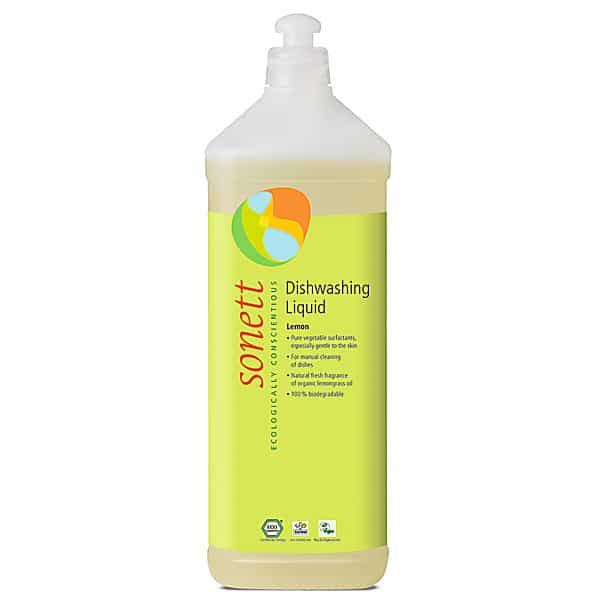
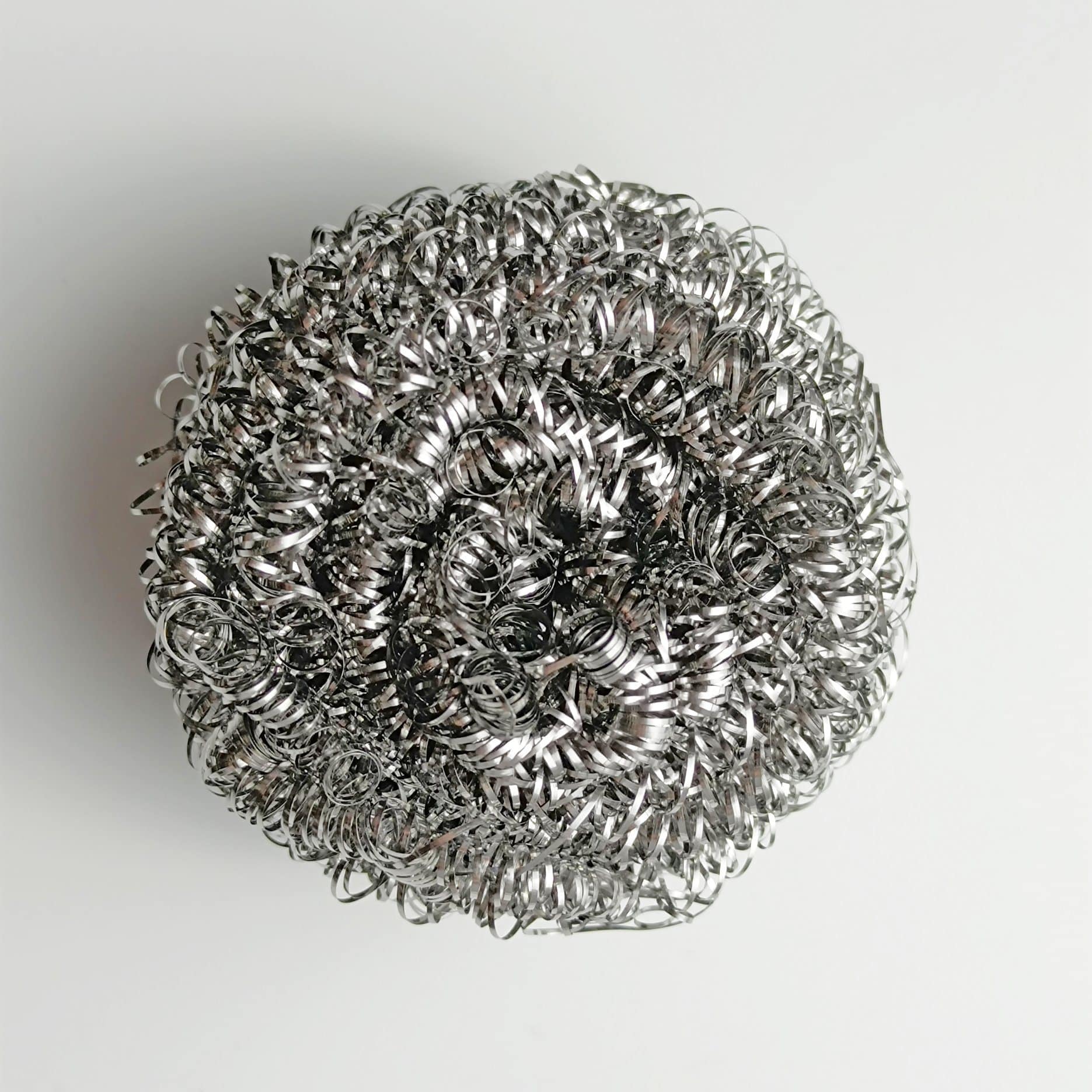
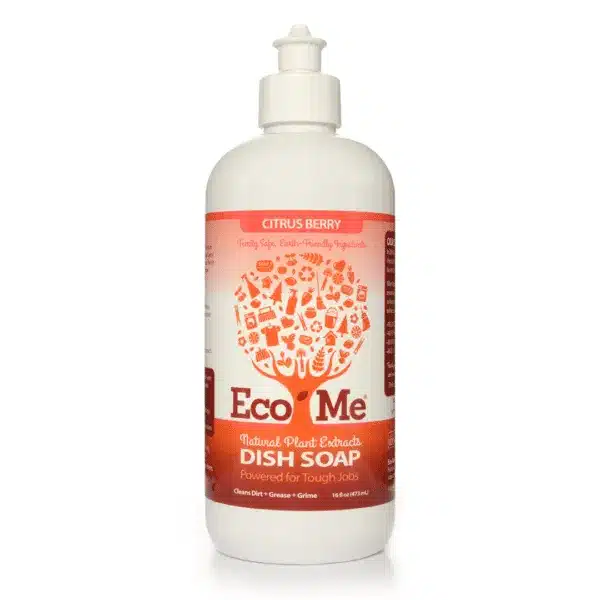
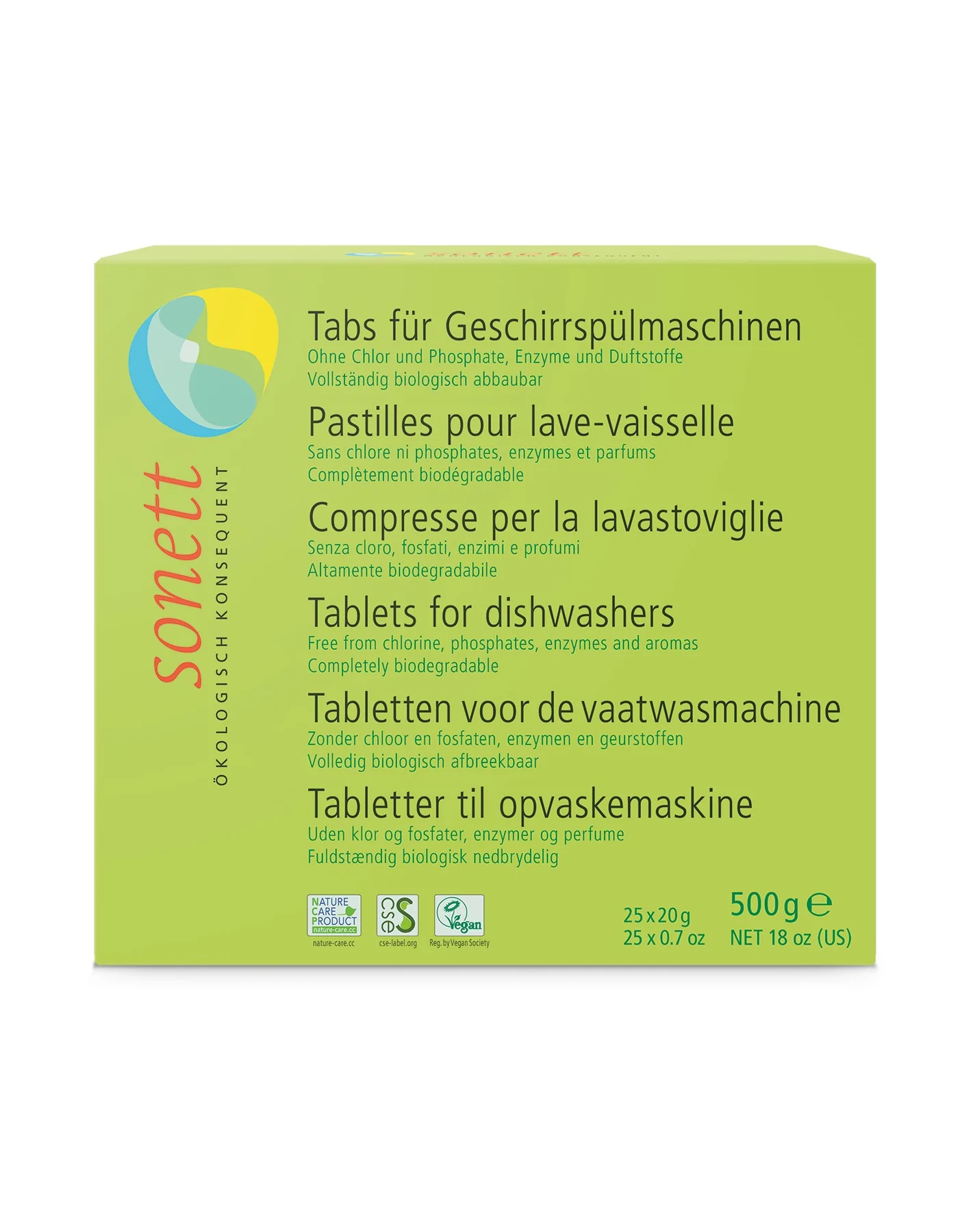

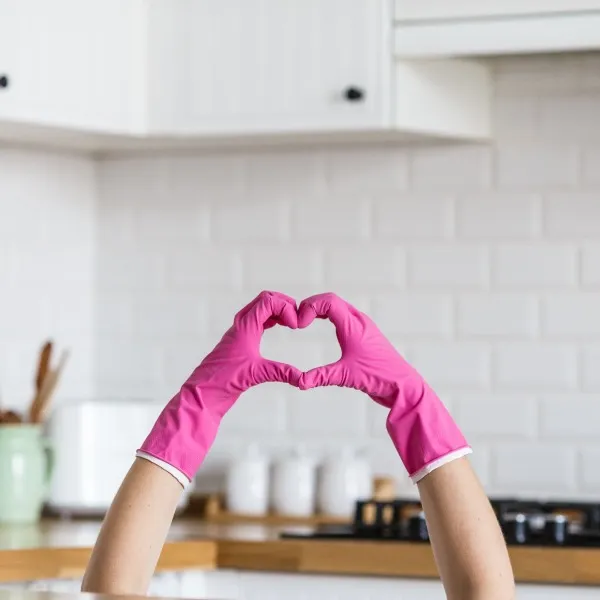
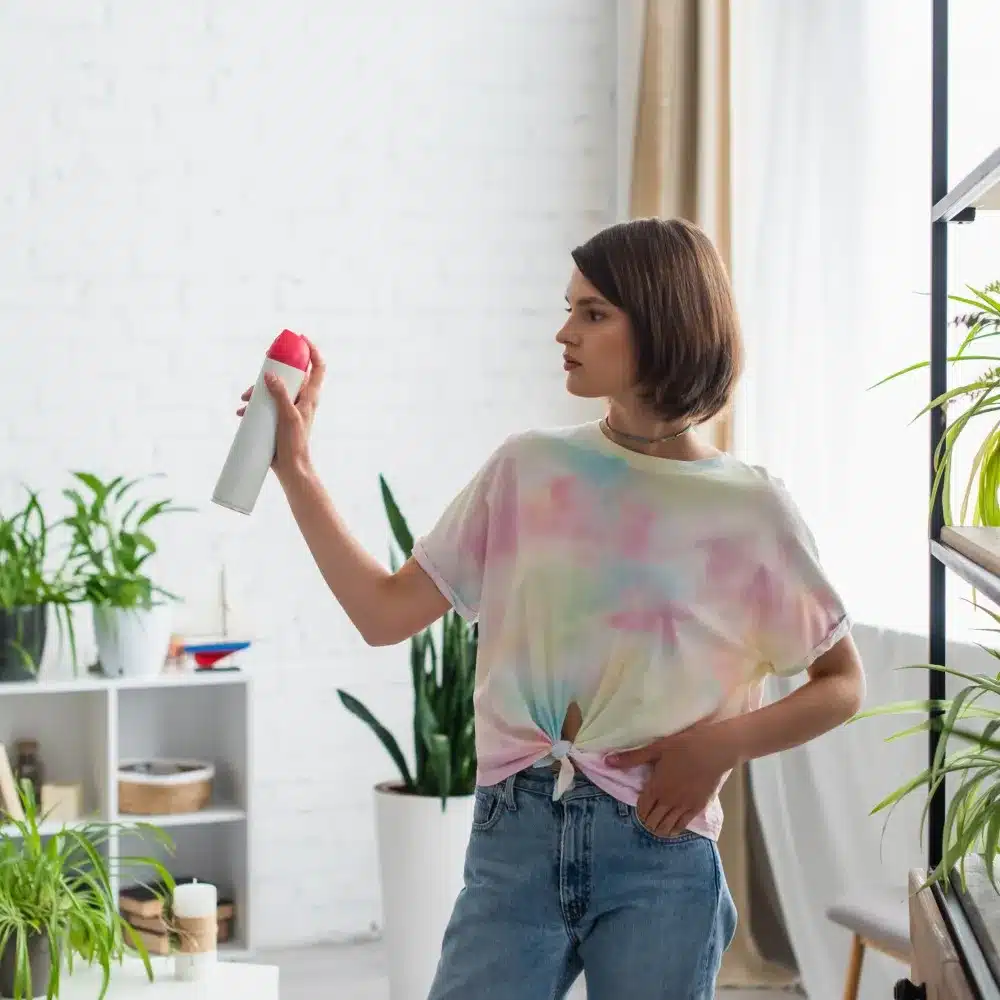
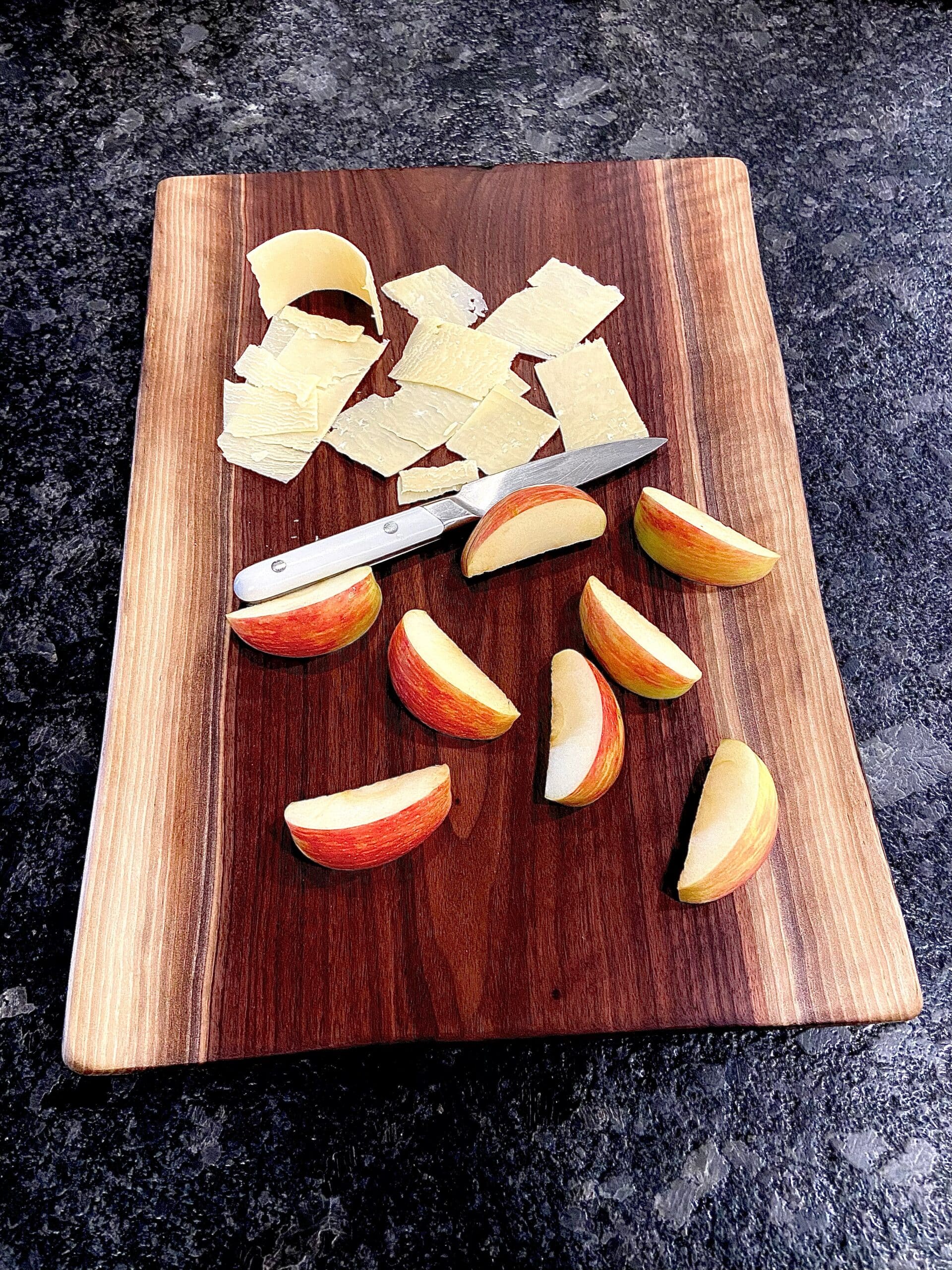
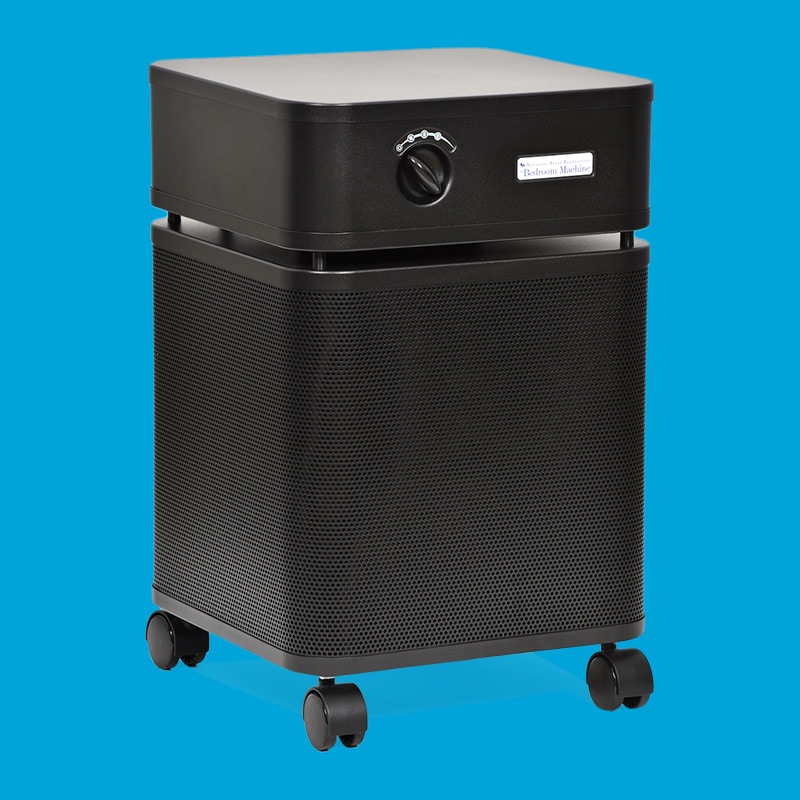
Leave a Reply
You must be logged in to post a comment.